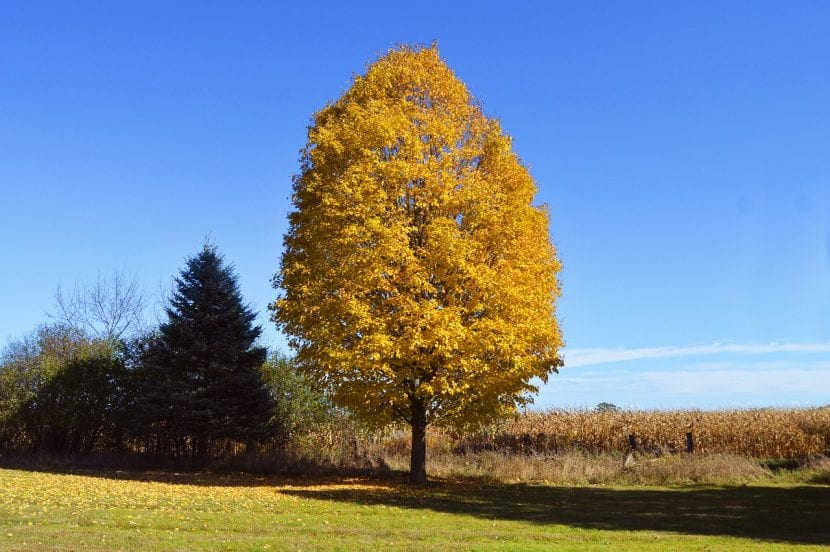
During autumn, many trees change color: some turn reddish, others orange and others, which will be the ones we are going to see, yellow. Yellow is a color that draws a lot of attention to humans, not in vain, it is the color of the Sun, the star that gives light and the one that, in a way, allows life to exist on Earth due to the heat it emits. .
We do not know if it is because of that or because, simply, they are very decorative species, but yellow trees are very popular in the gardens, since they are also not very difficult to care for. Would you like to know which ones are they?
Acer platanoides
- Image - Bruns.de // Acer platanoides
Known as real maple, acirón, flattened maple, Norway maple or banana leaf maple, is a deciduous tree native to Europe that reaches a height of up to 30 meters with a diameter of up to 10m. Its crown has a rounded shape and is composed of green palmatifid leaves.
Can live in temperate climates whose temperature range is between -18ºC and 30ºC.
Acer pseudoplatanus
- Image - Wikimedia / Willow
Known as white maple, false banana or sycamore maple, is a deciduous tree native to southern and central Europe that reaches a height of up to 25 meters with a diameter of up to 12m. Its crown is globose in shape and is made up of large, simple leaves with five lobes that are green in spring-summer and yellow in autumn.
It is perfect to have in large gardens that experience the four seasons of the year and where in winter the temperature drops below 0ºC.
Aesculus hippocastanum
Known as horse chestnut, crazy chestnut, false chestnut or Indian chestnut is a deciduous tree native to Bulgaria, Albania and Greece that reaches a height of about 20 meters with a diameter of 12, 15 or even 20m. Its crown is wide, more or less globose in shape and is made up of large green digited leaves.
It is a very interesting species to provide shade, since it can also live in places where the maximum temperature is 35ºC and the minimum is -2ºC. But yes, the ideal is that in summer there should be no more than 30ºC and in winter there should be frosts down to -18ºC.
catalpa bignonioides
Known as simply catalpa or Catalpa americana, is a deciduous tree native to the southern United States that reaches a height of 9 to 12 meters with a diameter of 5-8 meters. Its cup has a rounded shape, and is made up of heart-shaped leaves of a beautiful green color. At the beginning of summer it produces very showy white flowers.
It resists without difficulty frosts down to -18ºC and heat up to 35ºC.
Cercidiphyllum japonicum
Known as the katsura tree, is a deciduous tree native to China and Japan that reaches a height of 3 to 12 meters. It has a more or less pyramidal crown, composed of rounded dark green leaves.
It is a species that lives perfectly well in acidic soils (pH 4 to 6), in areas where the temperature is always between -18ºC and 30ºC. In hot, tropical climates it does not thrive.
Ginkgo biloba
Known as pagoda tree, tree of the 40 shields, gingo or sacred tree, is a primitive deciduous tree (coexisted with dinosaurs) native to China that reaches a height of up to 30 meters and whose trunk can measure up to 40-60cm thick. Its crown is pyramid-shaped, and is made up of fan-shaped leaves of a green color.
It is a species that is cultivated in temperate-cold climates, with temperatures down to -18ºC in winter and up to 30ºC in summer. In climates such as the warm Mediterranean, with temperatures ranging from -2ºC to 38ºC it can also live, but its growth rate is much slower and, in addition, it will need protection from the sun.
Koelreuteria paniculata
- Koelreuteria paniculata
Known as the Chinese soap, tree of the lanterns, lanterns or Sapindo of China, it is a deciduous tree native to China, Korea and Japan that reaches a height of between 7 and 12 meters. It has a rounded crown which is composed of light green odd-pinnate leaves. Towards the end of summer it produces very cheerful yellow flowers.
It is very interesting for medium gardens where minimum temperatures of -12ºC are registered.
Liriodendron tulipifera
Known as the tulip tree, Virginia tulip tree, tulip tree or tulip tree, it is a deciduous tree native to North America that reaches a height of up to 30 meters, with a diameter of 10m. When it is young it has a pyramidal shape, but as it ages it acquires an oval shape. Its crown is composed of leaves with 5 triangular green lobes. In spring, it produces greenish-yellow flowers of about 5cm in diameter with an orange center.
It can be kept in areas with frosts down to -18ºC and planted in slightly acidic soils (pH between 5 and 6).
Punica granatum
- Image - Flickr / Ferran Turmo Gort
Known as Granada or pomegranate, is a deciduous tree originating from the Balkans to the Himalayas that reaches a height of 3 to 6 meters. Its crown is made up of more or less small leaves of about 5cm long by 1cm wide of bright green color. During the spring it produces red flowers and, towards the middle / end of summer, the fruit finishes ripening, which is a red globose berry.
Of those we have seen, it is the best resistant to drought and heat. In the Mediterranean region, with annual rainfall of 350-400mm, it is often found in gardens as it is practically cared for alone. In addition, it resists freezes down to -12ºC.
sorbus aucuparia
Known as the hunter rowan, birders or wild rowan, is a deciduous tree native to Europe and Asia that reaches a height of 8 to 10 meters. Its crown is ovoid with green leaves that measure about 6,5cm. In late spring it produces white flowers.
It is able to withstand frosts down to -25ºC, the only bad thing (or less good) is that it cannot live in hot climates without temperatures below zero.
Which of these yellow trees did you like the most?
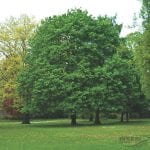

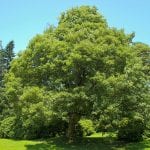
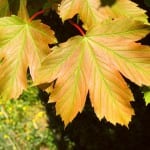
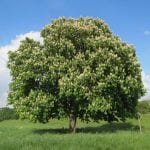
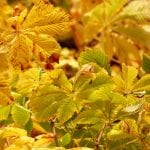


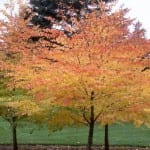
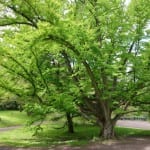
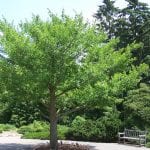
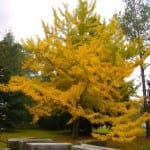

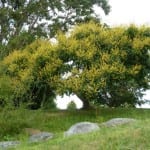
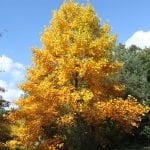
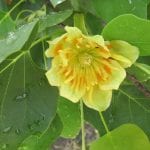

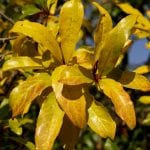

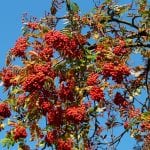
Hello: I think you are a great connoisseur of the subject!
You know I would like to plant trees that can help the health of people, in their different needs but in an organic way, healthy with nature. mainly with people with limited economic resources for their treatment; As diseases and needs in the following areas:
-A tree that if it serves to cure insomnia!
-fever
-Anxiety, nervousness.
- picket of vivara
flu
-leukemia
-slim down
-Give natural protein
* Well if there are trees or failing that they can be prepared for their function, I know that there could be roots, shrubs or plants ... but what I would like to know is in terms of trees for these functions.
or, failing that, a book or magazine for consultation that you recommend to me!
Hi Rodolfo.
I see you are from Mexico. We are in Spain, and I do not know the medicinal trees in your area. However, I can tell you that pine for example is used to treat colds, fig (Ficus carica) for constipation, laurel (Laurus nobilis) to relieve wasp and bee stings, or hazel (Corylus avellana) is a good anti-inflammatory.
A greeting.